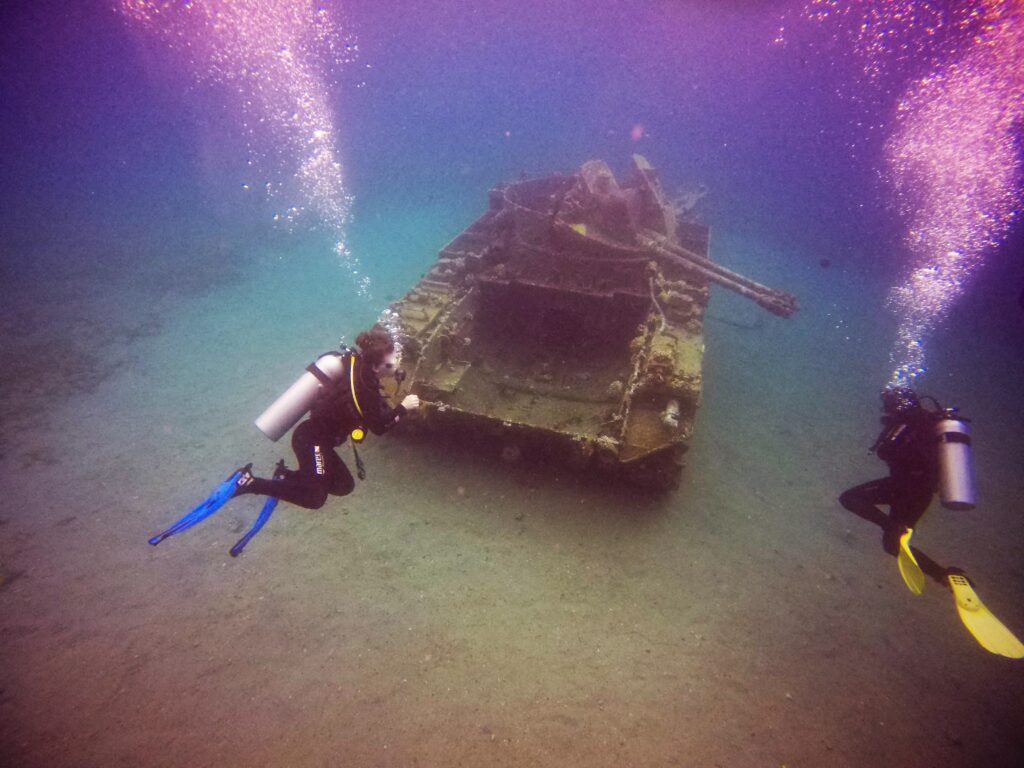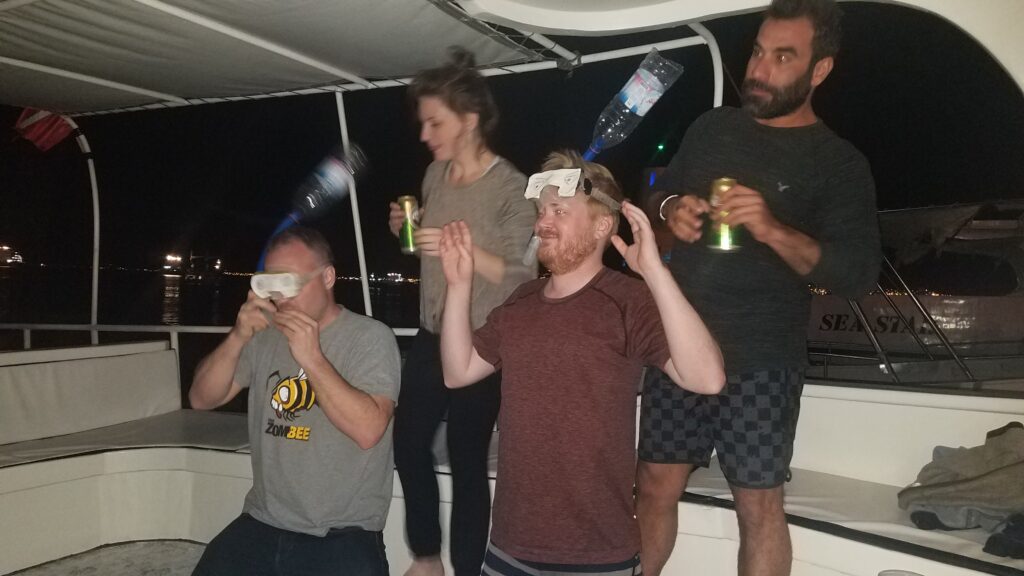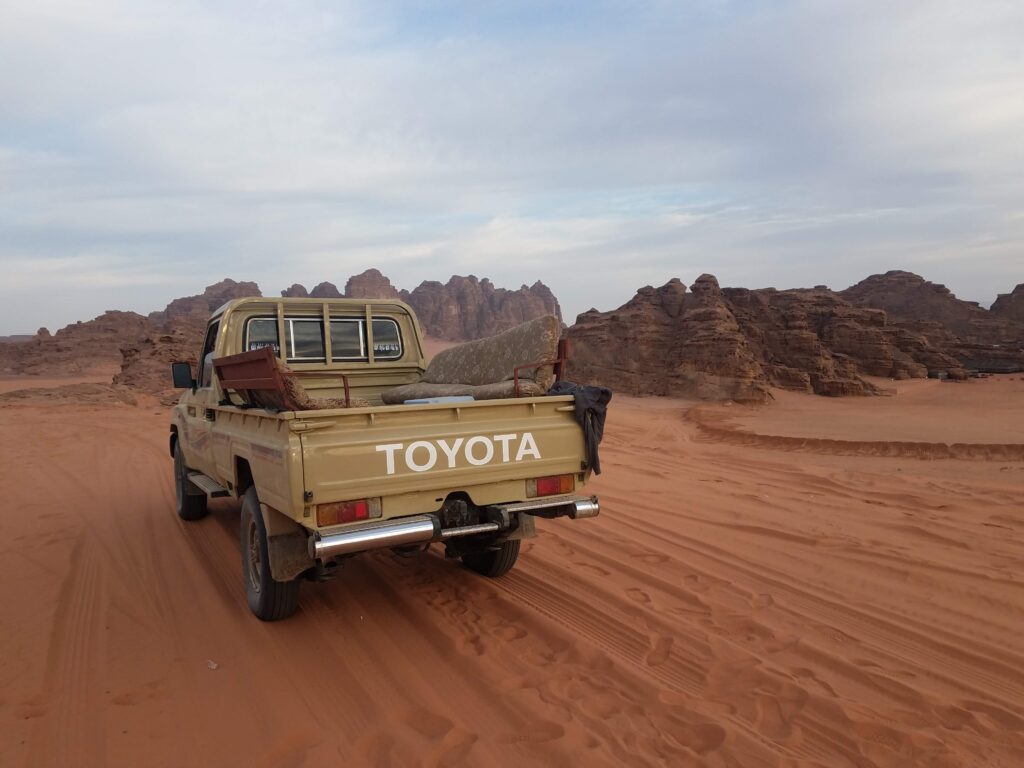Itinerary:
Aqaba –> Wadi Rum –> Petra –> Dead Sea –> Jordan River –> Jerash
This has to be one of my favorite trips ever! We were constantly amazed at the friendliness and kindness of the Jordanian people. Visiting at an “off” tourism time (November) also meant we had mild weather and limited crowds wherever we visited. Some of our favorite experiences were at underrated destinations.

Aqaba
We have heard so much about diving in the Red Sea that we had to give it a try. While the great Red Sea dives – many ranking in the top 20 in the world – are off Egypt, we found that Aqaba was an experience all in its own.
On arrival to Aqaba, we checked into the IHG hotel there with points and free nights – as I have mentioned in other posts, I love this hotel chain! We each had over 100,000 IHG rewards points from both the 2016 Priceless Surprises award sweepstakes (so ridiculous I can’t believe it ever happened), and credit card signup bonuses. The hotel was almost nearly empty – providing us unobstructed views of the beach and no wait when visiting the amazing hotel breakfast.
Aqaba was our base for two days of diving in the Red Sea. The coral colors really popped in the sunlight and clear water! In addition to corals and ocean life, there are a number of interesting… “artifacts” scattered about on the bottom of the ocean: a single tank, an aircraft, multiple shipwrecks. The novelty is slightly reduced by the fact that these were all deliberately sunk in order to create artificial reefs and diving spots. Could you imagine sinking an old airplane fuselage off the Florida Keys? Regardless of how anyone feels about the “ethics” of it, the wreckages do seem to be making a home for coral and marine life, so mission successful.

Beautiful Aqaba Sunrise! 
Staring down the tank guns 

C-130 Fuselage
Perhaps one of the most surprising moments in this Middle East diving tour was when our Jordanian dive masters pulled us aside after the trip and asked if we were interested in a drinking game. Me being intrigued (and Athea being worried), we headed out to a local liquor store about bought beer… a lot. I was asked if I wanted to play the “goggle game”, which entailed wearing a snorkeling mask while a 16-oz beer was poured down the breathing tube. I eagerly volunteered – and the 16oz flowed down smooth. What I wasn’t ready for was the continuing flow – they ended up pouring two and a half beers in before I ripped off the mask and immediately made a run for the side of the boat, barely making it to the edge in time for all that beer to spew out.

Wadi Rum
After Aqaba we headed up to Wadi Rum, the otherworldly desert landscape that is known for being the set for Mars in multiple movies. Staying a night in a tent camp, we were treated to a desert tour in the bed of an old Toyota pickup, as well as a beautiful, starry night sky as the backdrop for the illuminated rock formations.

After a couple days touring and hiking in Wadi Rum, we set out north for Petra, one of the most incredible ancient structures in the world. While I had seen photos of it, and been inspired to visit, I had never really known the history behind this place. While there were periods of construction from about 200 BC through the middle ages, the most impressive works, such as the Marketplace and Treasury, were built prior to contact with the Romans. It is incredible to me that the small town was able to muster the resources and craftmanship to carve these impressive structures out of the rock.
Even getting to Petra is an experience, as the only connection to the outside world is through a slot canyon reminiscent of something you would see in the American southwest. Twisting and turning through the canyon, the first image of Petra to come into view is the Treasury (Al-Khazneh) itself, letting you know you have arrived at one of the most fascinating places on earth.
From the Treasury, we toured around for the remainder of the day, racking up about 10 miles of hiking between the various buildings.
Dead Sea
From Petra we headed north to the Dead Sea, where we once again enjoyed a crowd-free visit – in fact, arriving at about 10am, there was nobody else to be seen in the entire area! This provided us plenty of time to Sit on the beach, take a swim (or float), and marvel at the stacks of layered salt that were just about everywhere.



Floating! 
Salt!
Jordan River
From the Dead Sea, we headed out to Bethany-Beyond-the-Jordan, known in Arabic as “al-Maghtas”, the baptismal site of Jesus in the Jordan River. In addition to being a site of religious significance, it is also a major archaeological site, as there are old Byzantine church and mosaic ruins dotting the site. In a fortunate display of religious tolerance, the Jordanian ruling family has committed to purposeful excavation and restoration of the site, as well as retaining access for pilgrimages to the area. In fact, they have gone so far as to build a new Orthodox church at the site.
Once again, when we visited the river, we were the only people there… on the Jordanian side. By contrast, there were wave after wave of tourist groups on the West Bank side, only maybe 50 feet across the river, getting a chance to be baptized at the site.

One of the archaeological sites 
Athea in the river!
Jerash
The final stop of our trip was at Jerash, a small regional city with incredibly well-preserved and expansive Roman ruins. A testament to the expanse of the Roman Empire, as well as the level of commitment to civic institutions, it was simply mind-blowing to walk through this city and consider how it would have appeared in its heyday.





Amman
Our trip ended with a day in Amman as we prepped for our flight back home. Amman – known as Philadelphia in antiquity – is a fascinating city with an impressive set of Roman ruins in its own right. I’ve never been to a city quite like it, with neighborhoods being divided essentially by “hills” – there are nineteen total large hills comprise different parts of the city. As a result, travel, whether by foot, bicycle, or car, is highly up-and-down in nature.
The hill of most interest is the “citadel”, which contains a fascinating set of historical ruins that represent the changing occupations over the last several millennia: an inscription from the Ammonites dating back to 800 BC, the ruins of the Roman Temple of Hercules, and the Umayyad Palace, dating back to the ninth century. On a neighboring hill is the Roman Theater, carved into the rock and remarkably well-preserved.

Temple of Hercules, Amman 
Roman Theater





